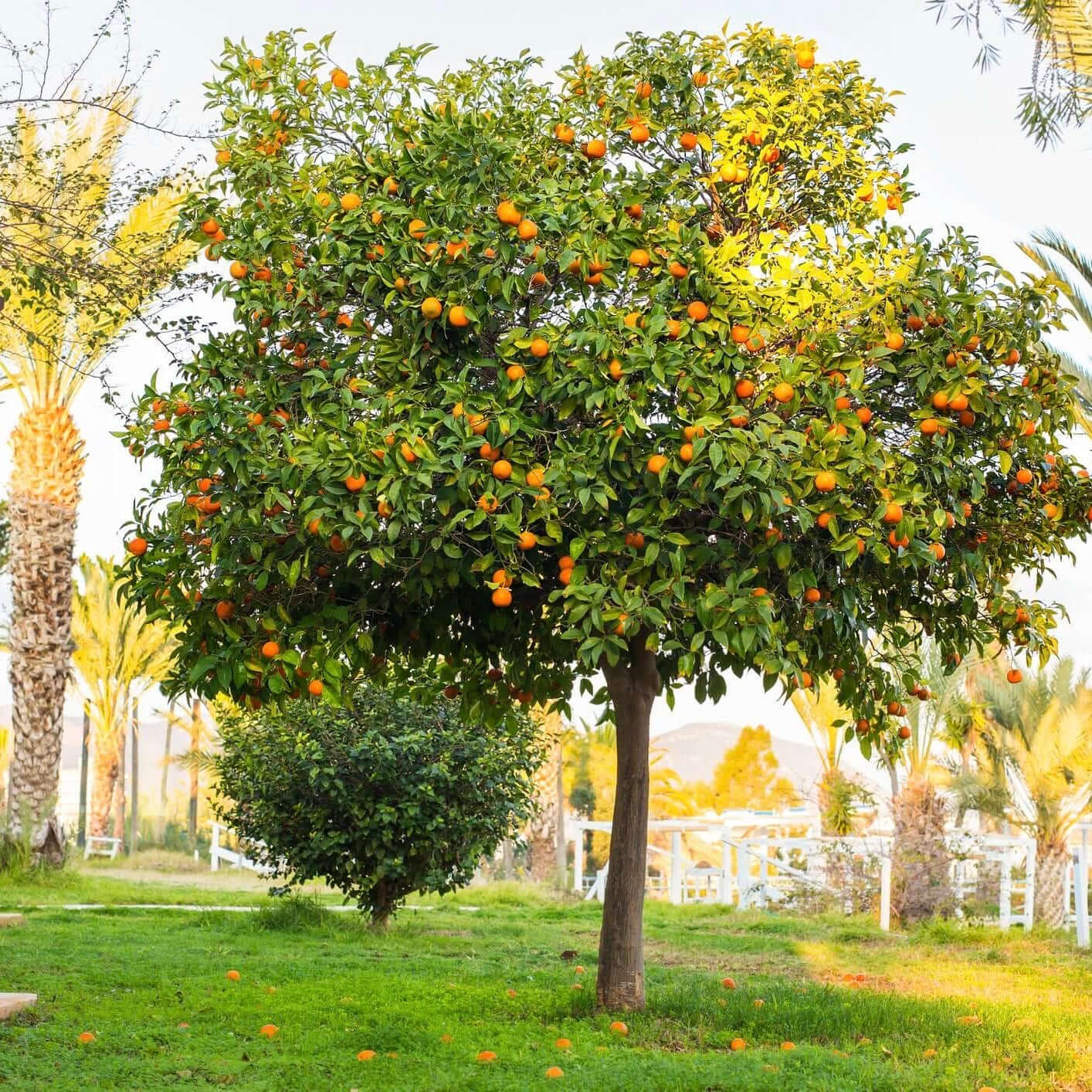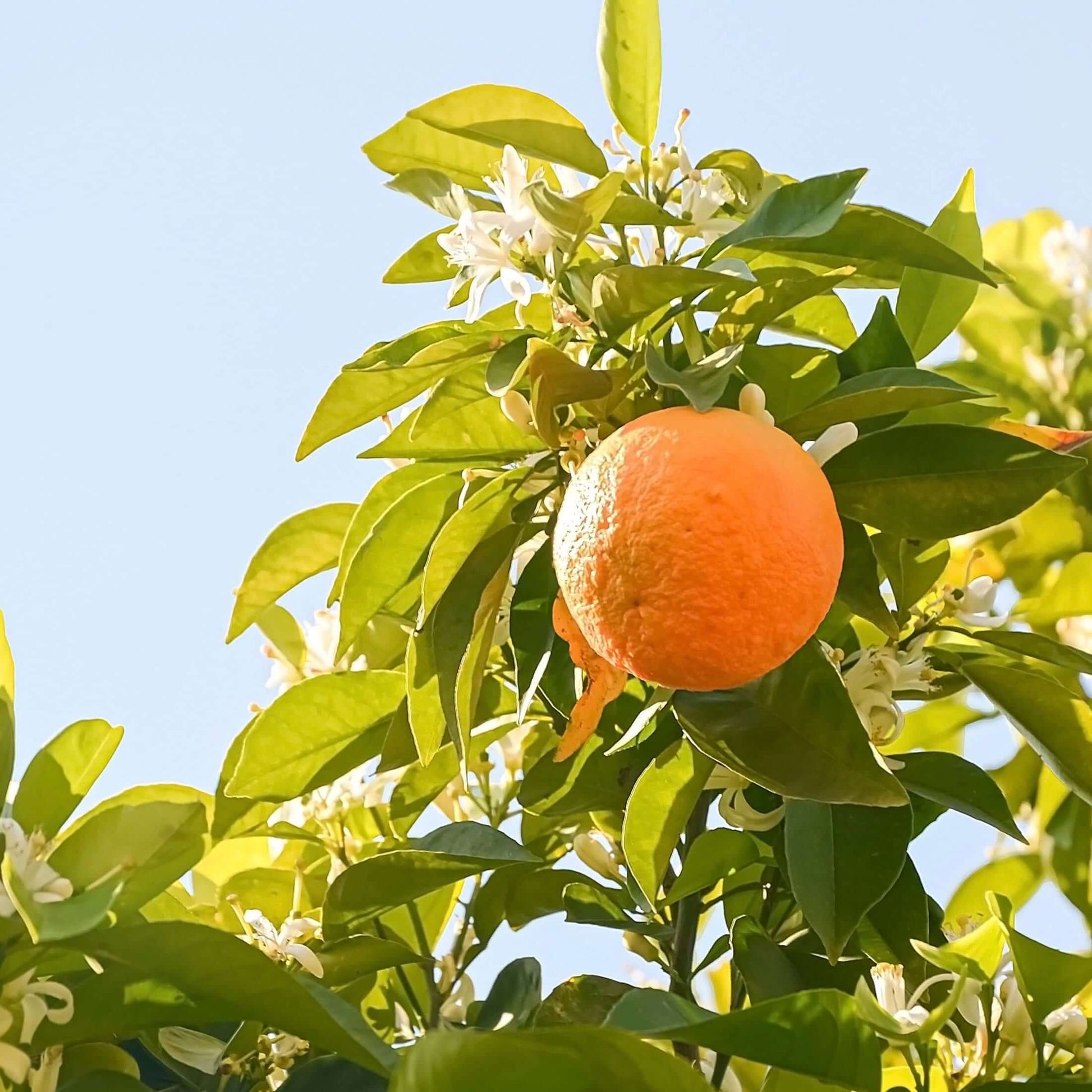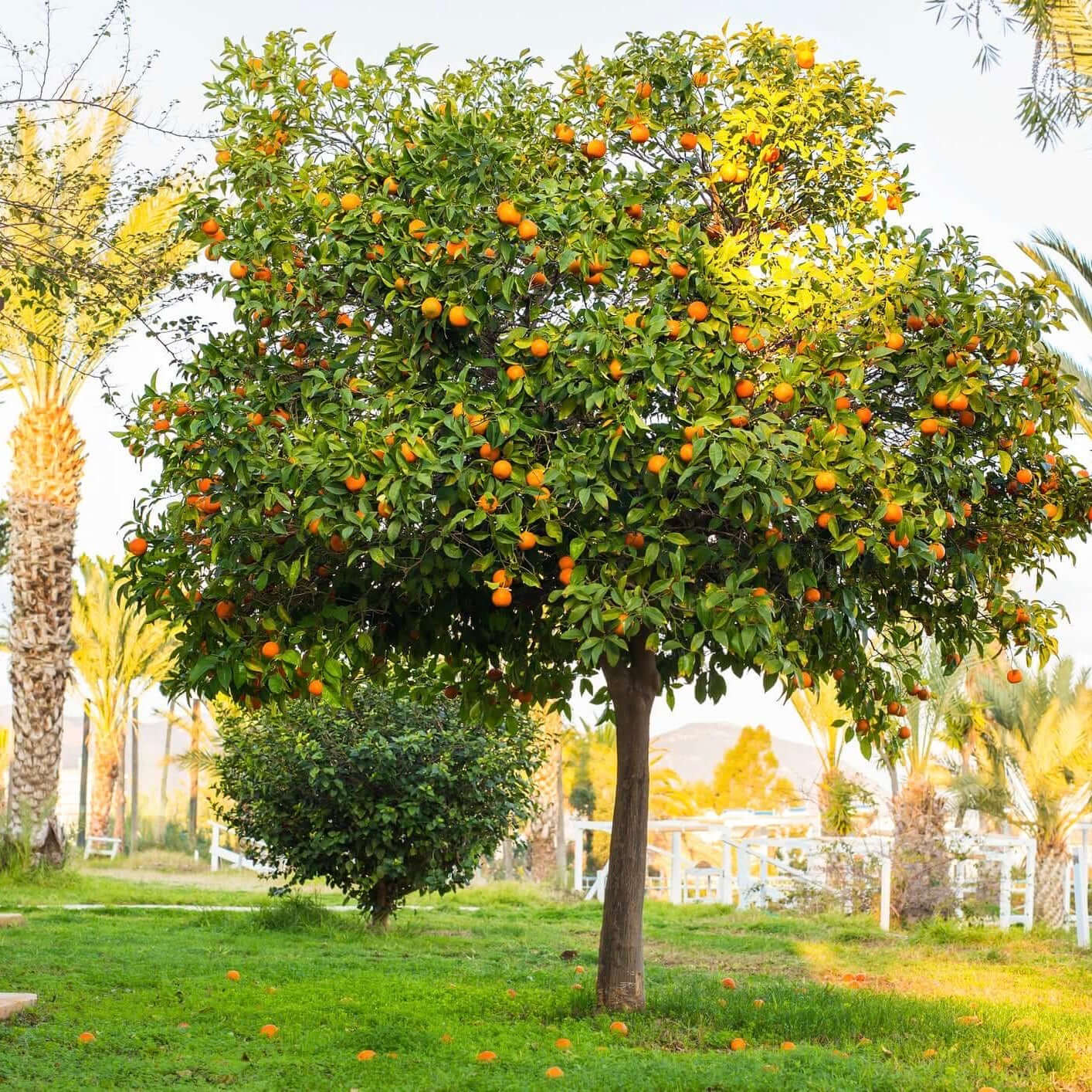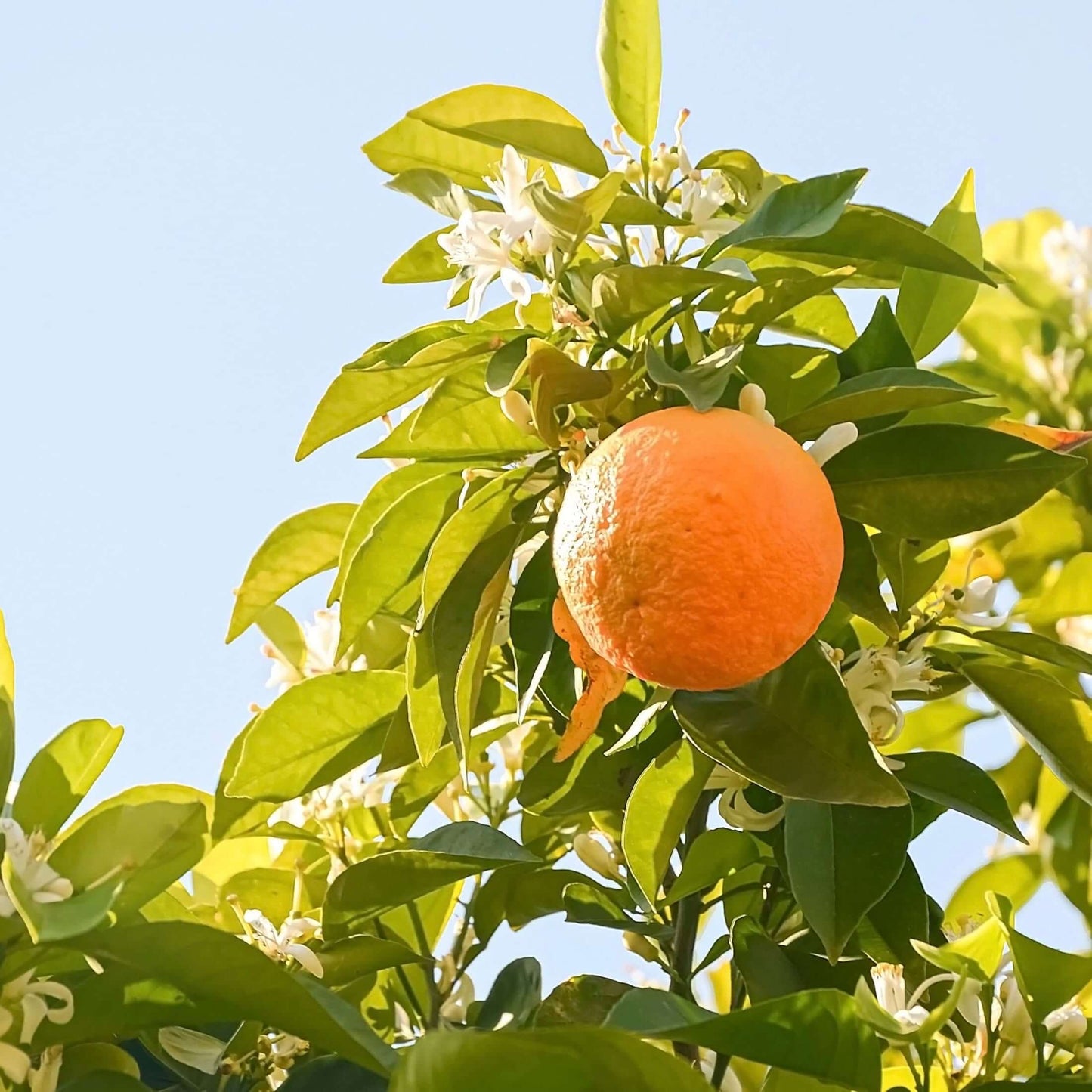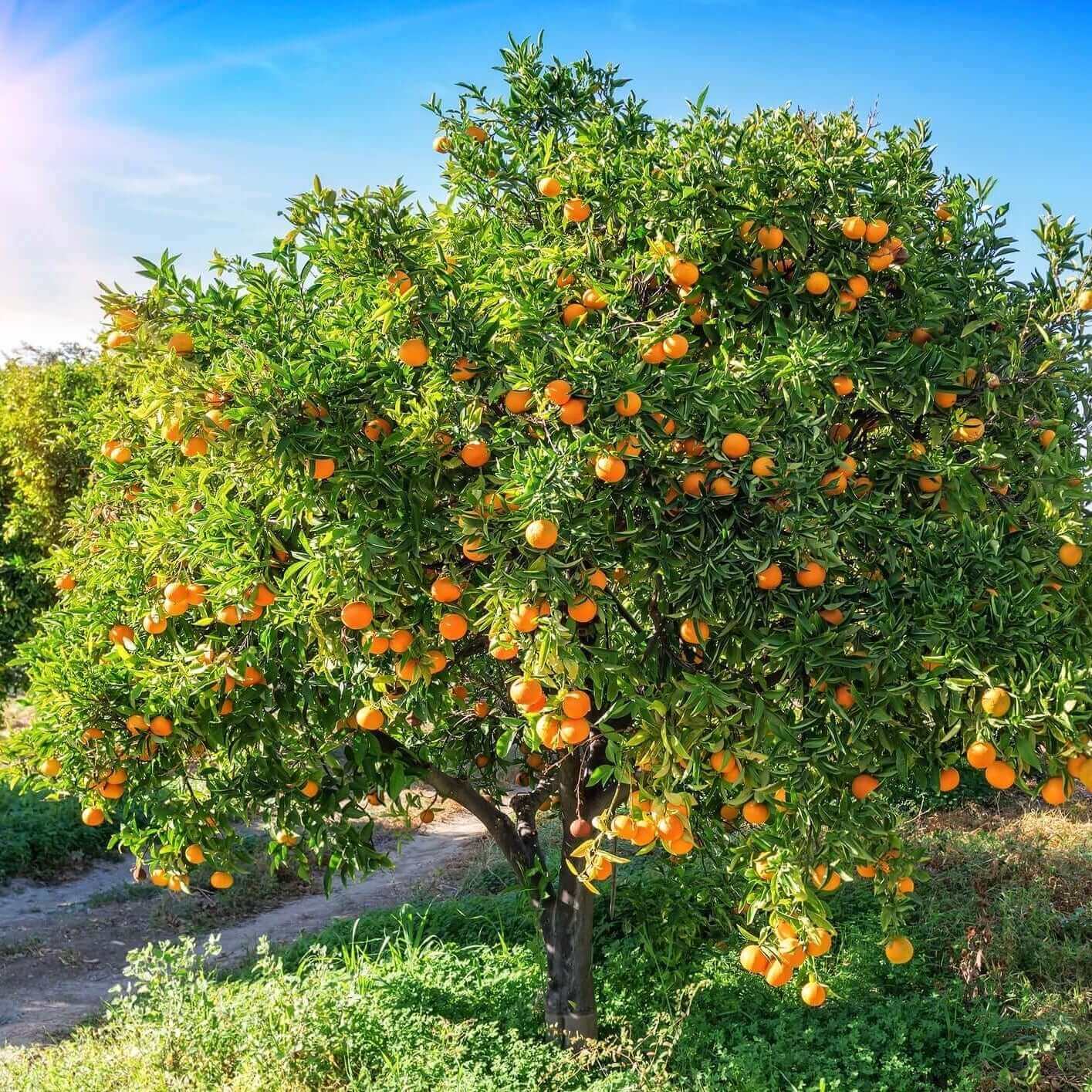The Washington Navel Orange Tree needs full sun, moist and aerated soil. Fast drainage for this citrus is essential. Water your orange tree regularly and consistently the first year for deep roots. Reduce frequency after the plant is established but water deeply. In spring, feed your Washington Navel Orange Tree with Gardner & Bloome 8-4-2 Organic Citrus & Fruit Tree Fertilizer. During the spring months you can prune erratic growth or shape as desired.
The Washington Navel Orange Tree is easy to grow in the garden. Plant your Navel Orange in a location that is wind-free, frost-free, and will receive at least 8 hours of full sun in a well draining soil that is porous and aerated. You may need to add soil amendments like Gardner & Bloome Organics Planting Mix Premium Garden Soil or Kellogg Garden Organics Gromulch 2-in-1 Planting Mix & Mulch to improve drainage if your soil is a heavy clay. Protect your citrus tree from frost with the use of frost cloth when temperatures drop, or plant in a sheltered location close to a house or structure.
Water your Washington Navel regularly and consistently the first year to develop deep roots. As the roots become established in the ground you may reduce the frequency. Avoid standing water and keep away from shallow frequent watering. In the ground, citrus prefer deep watering less frequently. So many factors will determine how often to water such as temperature, soil porosity, wind, and tree size. Fertilize with Gardner & Bloome 8-4-2 Organic Citrus & Fruit Tree Fertilizer in spring.
Pruning is an essential investment for your Washington Navel and has several benefits such as promoting new growth, improving air circulation, and increased fruit production. During the spring months, prune erratic growth, damaged branches, or shape as desired. All citrus trees are grafted and any new growth that appears below the graft union (generally 4-8 inches from the soil) should be removed immediately with clean, sharp pruners. These vigorous branches or “suckers” are from the root stock and rob energy from the fruiting wood. To prevent damage or disease to your citrus tree, use pruners that are clean and sharp.
Mulching can help conserve ground moisture and help suppress weed growth. Apply a layer of mulch that is 2 or 3 inches deep and keep mulch away from the base of the trunk (at least 6 inches) to avoid disease or rot.



